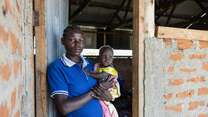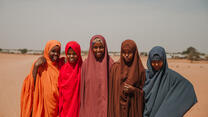Violence against women and girls perpetrated by their intimate partners is a global phenomenon—experienced by at least one in three women during their lifetime. Prevalence is likely to be even higher in humanitarian settings, with an increasing body of evidence showing intimate partner violence (IPV) to be the most common type of violence women experience, though it may go underreported and receive less attention from humanitarian actors compared to sexual violence perpetrated by armed forces.
A new study by the International Rescue Committee (IRC), Private Violence, Public Concern, examines the nature and drivers of intimate partner violence in three refugee camps across three continents. The research shows that intimate partner violence in humanitarian settings is driven by a complex set of factors that include pre-existing gender inequalities, which is exacerbated by rapidly changing gender roles.
Private Violence, Public Concern’s qualitative findings deepen our understanding of women’s experience of intimate partner violence in displaced settings and highlights the lack of programming that exists to effectively prevent and respond to intimate partner violence. The study took place in 2014 in Domiz camp in Iraq, Dadaab camp in Kenya, and Ajuong Thok settlement in South Sudan, and focused on three key questions:
- What are the drivers and nature of intimate partner violence in humanitarian settings?;
- How do displaced women experience intimate partner violence?; and
- What are women’s suggestions for how humanitarian organizations can improve prevention and response to intimate partner violence?
This brief presents key findings from the study, draws on knowledge and insights from decades of IRC experience working with women and girls in crisis settings, including research on intimate partner violence in West Africa and Syria, and presents recommendations that are relevant to the humanitarian community working both within and outside of formal camp settings.


